Russia’s alleged use of feared long-range missiles to attack Dnipro flags grim new chapter
Whatever species of bomb landed on the Ukraine city of Dnipro, the Russian dictator has succeeded in unleashing a new wave of fear about a deadly weapon of mass destruction constantly threatened but never actually fired in combat. Until now.
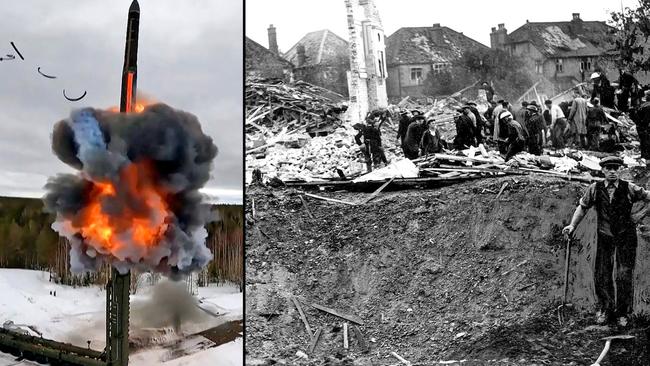
Tom Lehrer, the great American singer-songwriter-satirist, wrote a song in 1967 about the intercontinental ballistic missile, a long-range weapon so terrifying that only ridicule could properly express it: “We will all char together when we char/ And let there be no moaning of the bar/ Just sing out a Te Deum/ When you see that ICBM/And the party will be ‘come as you are’.”
The ICBM has landed back in the headlines: a weapon of mass destruction pioneered by the Germans at the end of WWII, developed during the Cold War by competing western and Soviet engineers using Nazi blueprints and imported German scientists, and now allegedly fired by Russia at Dnipro in central Ukraine.
Thus begins a grim new chapter in the morally fraught story of an armament that now has a range of almost 15,000km, capable of carrying conventional and nuclear warheads and making virtually any target in the world vulnerable.
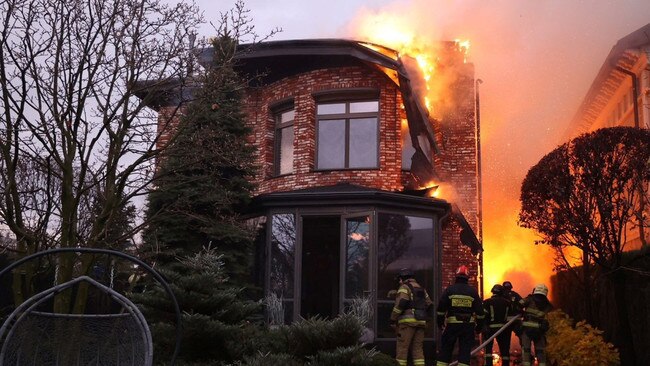
Volodymyr Zelensky said Dnipro was attacked with an ICBM launched from the Astrakhan region of Russia more than 965km away: “All the parameters – speed, altitude – match those of an intercontinental ballistic missile,” he said.
Putin claims that the bomb was a “new conventional intermediate-range” missile called Oreshnik “with non-nuclear hypersonic equipment”.
Whatever its name, this was the first combat deployment of MIRVs, multiple independently targetable re-entry vehicles, with multiple warheads hitting the target. “It is a historic turning point,” said the former Ukrainian government adviser Anton Gerashchenko. “An intercontinental ballistic missile used not on a firing range but against a city of a million people.”
Deeply embedded in Cold War memory, the ICBM carries a particularly heavy historical payload for Britons since ours was the first country to suffer the impact of these infernal machines. The earliest form of flying bomb and precursor to the ICBM was the V-2 rocket, a long-range guided missile powered by liquid fuel, the first artificial object to travel in space. This was Hitler’s “vengeance” (vergeltungswaffe) weapon, deployed in retaliation for the bombing of German cities.
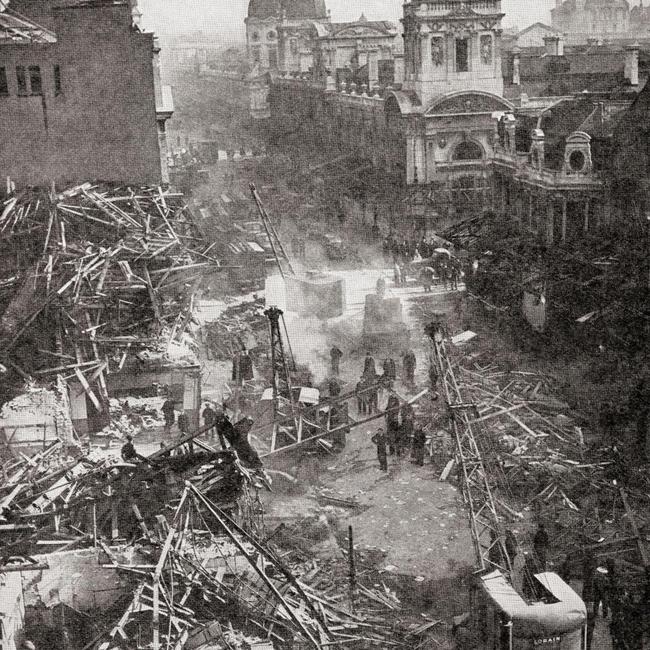
The first V-2 was fired at London on September 8, 1944, taking only five minutes to fly from a launch site near The Hague and landing in Chiswick, causing 13 casualties. On November 25, 1944, a V-2 exploded at Woolworths in New Cross Road in Lewisham, southeast London, killing 168 people. In all, 1115 flying bombs were aimed at the UK from the continent, killing an estimated 2754 people and injuring 6523.
The long-range supersonic V-2 plummeted from an empty sky so fast it could not be heard approaching. But America had seen the ICBM coming. In 1943, the US general Hap Arnold warned: “Some day, not too distant, there can come streaking out of somewhere – we won’t be able to hear it, it will come so fast – some kind of gadget with an explosive so powerful that one projectile will be able to wipe out completely this city of Washington.”
The leading figure in German rocket technology was Wernher von Braun, an SS officer, Nazi party member and missile pioneer. After the war, the US secretly launched Operation Paperclip to move von Braun and his expertise to the US, along with 1600 other German scientists, engineers and technicians. Many of these had been involved in V-weapons development, aviation or chemical and biological warfare and some had been committed Nazis. Few questions were asked.

The Soviets began a parallel project to import German war technology, Operation Osoaviakhim, assembling more than 2500 military scientists, engineers and technicians. Soviet recruitment was more brutal: the NKVD, predecessor of the KGB, simply rounded up German scientists and transported them by rail to the USSR.
In the US, von Braun worked on the intermediate-range ballistic missile program and developed rockets to launch the first US space satellite. His Nazi past was quietly overlooked in the interests of overtaking the Soviet Union in the arms race. Again, Tom Lehrer put that hypocrisy into a protest song: “Once the rockets go up, who cares where they come down?/ ‘That’s not my department,’ says Wernher von Braun.”
Assimilated into NASA, von Braun was, to some, the “father of space travel”; to others, a Nazi who escaped justice. Lehrer sang: “Some say our attitude/ Should be one of gratitude/ Like the widows and cripples of old London Town/ Who owe their large pensions to Wernher von Braun.”
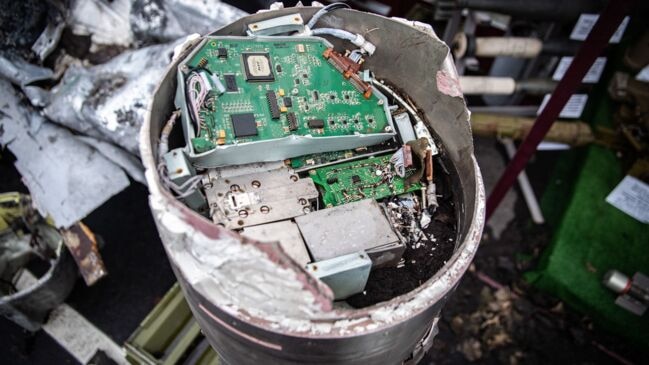
The first ICBMs were deployed by the USSR in 1958; the US followed the next year. By the height of the Cold War, the US air force had more than 1200 missiles facing about 1400 Soviet ICBMs.
The Salt and Start treaties promised reduction but in recent years the weapons have reproliferated. All five nations with permanent seats on the UN security council have fully operational long-range ballistic missile systems.
Israel deployed a road-mobile nuclear ICBM in 2008. India successfully test-fired an ICBM in 2012 with a range of at least 4425km. North Korea claims to have tested an ICBM capable of carrying a large thermonuclear warhead.
The latest Chinese ICBM can fly some 12000km, putting the US within range.
In recent decades, the threat of the ICBM has hovered over the globe, a sabre to be rattled, occasionally reduced and denounced, but a long arm of destruction able to reach across continents, constantly threatened but never actually fired in combat. Until now.
It suits Russia to create uncertainty over precisely what species of bomb landed on Dnipro. That fits with the long-established Soviet military tactic of maskirovka, masking reality, fomenting anxiety through deception and doubt.
As in the Cold War, the power of these terrible weapons lies in the damage they can inflict on the ground and the dread they provoke in prospect. Whatever Putin has thrown at Ukraine, he has deliberately unleashed a new wave of fear of the sort deployed by Hitler when he tried, and failed, to cow Britain 80 years ago.
The Times


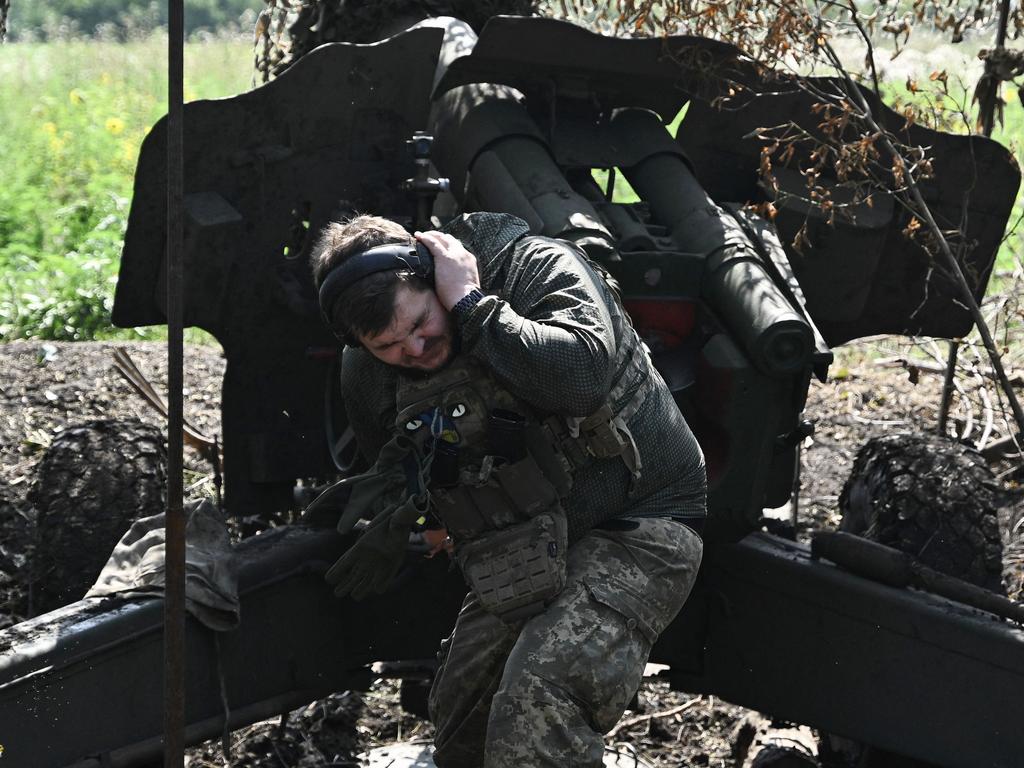




To join the conversation, please log in. Don't have an account? Register
Join the conversation, you are commenting as Logout